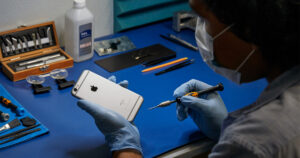
Modern cars run on automotive wire harnesses, which are vital components. These wiring systems transport electrical power and data across the car by means of bundled electrical cables, connectors, and other required components. Every wire harness is meant for certain uses and helps to smoothly run several vehicle systems. The need of high-quality wire harnesses increases as cars get more complicated with modern electronics and sophisticated functions. Offering both dependability and performance, an iatf16949 wire harness guarantees these parts satisfy exacting quality criteria.
1. Primary Harness
Often referred to as the body harness, the main wire harness is the core wiring system linking several electrical parts of a car. Usually located in the passenger compartment, it links systems like the lights, dashboard controls, airbags, and other interior electrical systems. The total performance of the car depends much on the main harness, which guarantees that all main electrical systems operate effectively and are well-coordinated. Given its significance, the primary harness has to be built to resist many climatic elements including temperature changes, humidity, and vibrations.

2. Engine Harness
A specialized wiring system called the engine wire harness links the electrical components of the engine including sensors, the fuel system, and the ignition system. Engine bay heat and vibrations are meant to be withstood by this harness. The engine harness guarantees efficient communication between the engine management system of the car and sensors monitoring and modifying factors including fuel injection, engine timing, and exhaust pollutants. Maintaining engine performance, fuel economy, and emissions compliance depends on a well-designed engine harness.
3. Chassis Wiring
Chassis harnesses link the electrical parts in the underbody or chassis of the car. This kind of harness connects electrical connections for the wheels and tires, suspension sensors, and braking system among other vital systems. The chassis harness guarantees that the car can operate correctly and react to inputs from several vehicle systems, including ABS (Anti-lock Braking System), traction control, and others. Designed to be very robust, these harnesses must survive the vibrations and severe weather conditions typical in the undercarriage area.
4. Harness of Lighting
As the name implies, lighting harnesses are meant to control the lighting systems of the car. This covers interior lighting, turn signals, brake lights, taillights, and headlights. The lighting harness guarantees that every light runs properly and interacts with other car systems as required. Vehicle safety depends on well-designed lighting harnesses, which offer unambiguous signals to pedestrians and other drivers. Being exposed to outside weather conditions, these harnesses are also designed to resist moisture.
Supporting everything from the engine and drivetrain to the lighting and safety systems, automotive wire harnesses are very necessary for the correct operation of a car. Though they all have various duties, the several kinds of harnesses main, engine, chassis, lighting, and powertrain are related to guarantee the general performance and safety of the car. Meeting industry requirements depends much on the iatf16949 wire harness, which provides dependable and high-quality solutions for the automotive sector. The need for sophisticated, high-quality wire harnesses will only grow as automotive technology develops, hence stressing the need of selecting the appropriate harness for every use.







